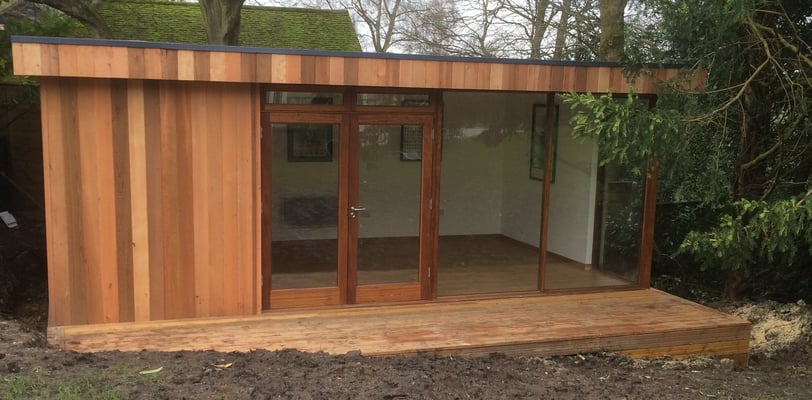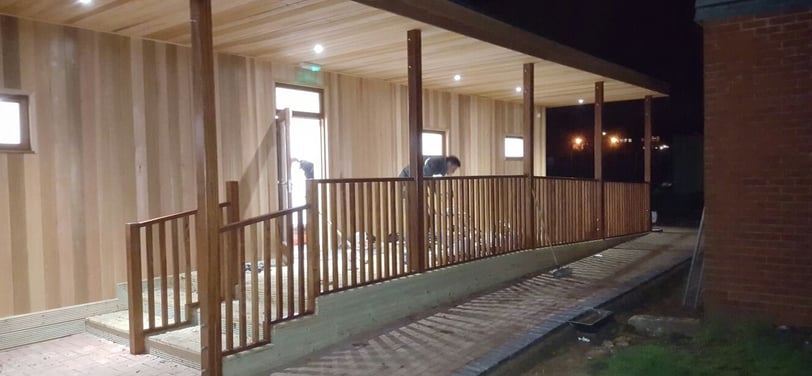The Ultimate Guide to Designing Your Perfect Garden Room
Discover expert tips and creative ideas to design the perfect garden room, tailored to your style, needs, and outdoor space.
2/21/20255 min read


Understanding the Purpose of Your Garden Room
When considering the design of your garden room, it is essential to understand its intended purpose. A garden room can serve a multitude of functions, each influencing its design, size, layout, and interior features. Whether you envision it as a serene relaxation area, a productive home office, a creative studio, a guest room, or a multifunctional space, defining the primary function is crucial to the design process. https://mulhollandcarpentryjoineryltd.com/
For instance, if your goal is to create an office, incorporating soundproofing and ample natural light will enhance productivity and comfort. Utilizing large windows not only adds to the aesthetics but also creates an inviting environment. A garden room designed specifically as a relaxation space can benefit from cozy furnishings and calming color palettes, making it a perfect escape from daily stressors.
Additionally, flexible spaces that can accommodate various functions—such as a guest room that transforms into a workout area—require careful planning. Having adaptable furniture, such as a sofa bed or modular shelving, can optimize the usability of the room while retaining an inviting atmosphere.
Inspiring testimonials from individuals who have transformed their garden spaces illustrate the diverse possibilities. For example, one homeowner converted a garden shed into a tranquil art studio, complete with bright colors and an inspiring view of the garden. Another couple designed their garden room as a multi-purpose space that caters to their working needs during the week and leisure activities on weekends. These stories reveal that understanding the specific purpose of your garden room plays a significant role in crafting a functional, beautiful area that complements your lifestyle.
Key Design Elements to Consider
When designing a perfect garden room, several key elements must be taken into account to ensure the space is functional, comfortable, and aesthetically pleasing. One of the first considerations is the selection of materials. The durability and visual appeal of materials such as timber, metal, and glass can significantly influence the overall look of the garden room. For instance, timber exteriors blend well with the natural surroundings, while metal can offer a contemporary feel. Additionally, incorporating sustainable materials not only enhances eco-friendliness but may also contribute to long-term cost savings.
Natural light plays an essential role in the overall ambiance of the garden room. Strategically placed windows and doors can maximize sunlight exposure, making the space feel open and inviting. Skylights or large sliding glass doors often provide a seamless transition between the indoor and outdoor environments, allowing occupants to enjoy the beauty of nature while being sheltered from the elements. The placement and orientation of these features should be carefully planned based on the sun’s path and the surrounding landscape. https://mulhollandcarpentryjoineryltd.com/
Another crucial aspect is insulation and heating options, which are vital for maintaining a comfortable temperature year-round. Effective insulation methods not only keep the garden room warm in winter but also cool in summer, enhancing its usability. Choosing energy-efficient heating solutions, such as underfloor heating or electric wall heaters, is another practical consideration to ensure comfort without excessive energy consumption.
Furthermore, roofing styles can significantly impact both the functionality and aesthetics of the garden room. A pitched roof may offer more headspace and give a more traditional feel, while a flat roof could provide a contemporary, minimalist aesthetic. Considering current trends such as green roofs, which can improve insulation and promote biodiversity, provides additional options for innovative design.
Maximizing Space and Functionality
Designing a garden room requires careful consideration of space and functionality to create an inviting and practical environment. Maximizing the available area, regardless of size, is essential for enhancing the usability of the room. One effective approach is to incorporate clever storage solutions. For instance, utilizing vertical space by installing shelves or cabinets can help you keep items organized without occupying valuable floor space. Consider built-in furniture options, such as benches with storage underneath, to optimize storage while maintaining a clean aesthetic.
Flexible furniture arrangements can also contribute to a more functional garden room. Modular furniture, which can be rearranged or expanded as needed, allows you to adapt the space for various activities. For example, a foldable table can serve as a workspace during the day and be stored away when not in use, freeing up space for leisure activities or gatherings. Additionally, consider using lightweight furniture that can be easily moved or reconfigured, enabling the room to accommodate different needs over time. https://mulhollandcarpentryjoineryltd.com/
Multifunctional designs play a crucial role in garden room functionality. This can involve incorporating elements such as sleeper sofas, which provide an extra sleeping area for guests, or coffee tables with storage compartments. By selecting versatile pieces that serve multiple purposes, you can maximize the value of your garden room.
Moreover, integrating outdoor elements into the design can enhance the overall experience. Large windows not only flood the space with natural light but also create a seamless transition between the indoor and outdoor areas. Using plants as décor can add life to the room and maintain a connection with nature, making the space feel organic and inviting.
Careful planning and thoughtful design choices will ensure your garden room is both functional and comfortable, fully capitalizing on the available space.
Creating a Personal Touch: Decor and Finishing Touches
Designing a garden room is a unique opportunity to reflect your personal style through decor and finishing touches. Start by selecting furniture that resonates with your taste. Whether you prefer contemporary, vintage, or rustic designs, the right pieces will lay the foundation for a cohesive look. Consider functionality as well; the arrangement should facilitate flow and comfort, making the space inviting for both relaxation and entertaining. https://mulhollandcarpentryjoineryltd.com/
Color plays a pivotal role in setting the mood of your garden room. Choose a palette that complements the natural surroundings while reflecting your personal preferences. Soft, earthy tones can create a tranquil atmosphere, while bold colors can energize the space. Incorporating textiles, such as cushions and throws, is an effective way to introduce colors and textures. These elements not only enhance comfort but also add visual interest, enabling you to change the ambiance easily as seasons shift or your style evolves.
Art and accessories are vital in expressing individual personality. Wall art, whether it's original pieces or printed works, should resonate with you and connect your indoor space with the outdoors. Incorporating plants provides life and vibrancy, fulfilling the function of decoration while purifying the air. Select a variety of sizes and types to create a natural aesthetic that flows throughout your garden room.
Seasonal decor is another dynamic aspect that allows you to keep your garden room fresh and inviting year-round. Simple changes, such as swapping out cushions and incorporating seasonal flowers or themed decor, can breathe new life into the space. Remember, your garden room should be a space that evolves with your lifestyle, adapting as your tastes change or as the seasons transition, creating a personal retreat that feels distinctly yours.


Craftsmanship
Specialising in bespoke garden rooms and garage conversions.
contact
© 2025. All rights reserved.
